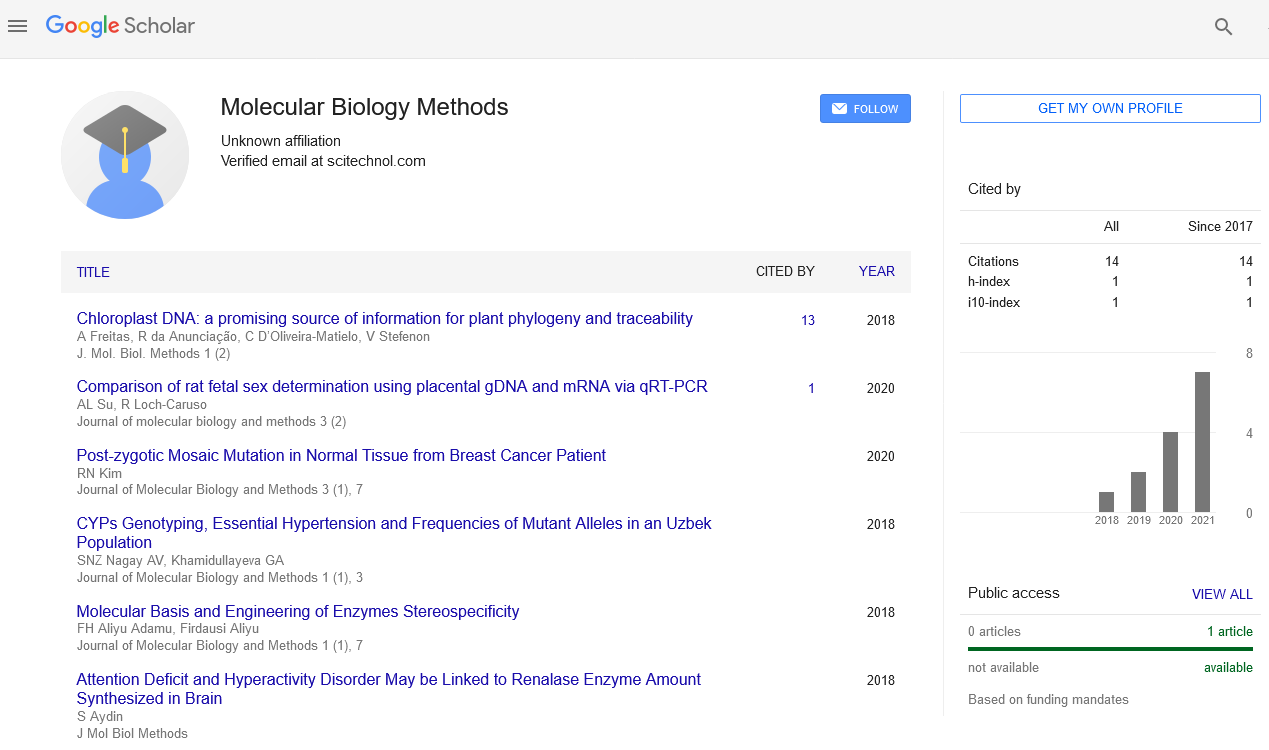Opinion Article, J Mol Biol Methods Vol: 6 Issue: 1
Analysis of DNA Sequencing Methods and their Advancements
Eva Daniel*
Departments of Pathology & Laboratory Medicine, University of California, Irvine, USA
*Corresponding Author: Eva Daniel
Eva Daniel, Departments of Pathology & Laboratory Medicine, University of California, Irvine, USA;
E-mail: evadaniel@66uc.edu
Received date: 20 February, 2023, Manuscript No. JMBM-23-94396;
Editor assigned date: 22 February, 2023, PreQC No. JMBM-23-94396 (PQ);
Reviewed date: 09 March, 2023, QC No JMBM-23-94396;
Revised date: 16 March, 2023, Manuscript No. JMBM-23-94396 (R);
Published date: 23 March, 2023, DOI: 10.4172/JMBM.1000127
Citation: Daniel E (2023) Analysis of DNA Sequencing Methods and their Advancements . J Mol Biol Methods 6:1.
Abstract
Keywords: Adenine, Guanine, Cytosine, Thymine, Chain-termination sequencing
Description
DNA sequencing is a fundamental process in modern molecular biology and has revolutionized our understanding of the genetic makeup of living organisms. The DNA molecule contains the genetic code, which is made up of four basic nucleotides: Adenine (A), Guanine (G), Cytosine (C), and Thymine (T). DNA sequencing refers to the process of determining the precise order of these nucleotides in a given DNA molecule. The mechanism of DNA sequencing depends on the specific method used, but in general, the process involves the use of DNA polymerase enzymes, which can incorporate nucleotides into a growing DNA strand. By controlling the sequence of nucleotides added, to determine the sequence of the original DNA molecule. There are several methods for DNA sequencing, each with its own advantages and disadvantages. The most commonly used methods are Sanger sequencing, Next Generation Sequencing (NGS), and third-generation sequencing technologies. Sanger sequencing, also known as chain-termination sequencing, was the first method of DNA sequencing to be developed. In this method, a DNA template is amplified and mixed with a primer, DNA polymerase, and a mixture of four nucleotides, each labelled with a different fluorescent dye. As DNA polymerase incorporates the nucleotides into the growing DNA strand, the fluorescent dyes are released and detected, allowing the sequence of nucleotides to be determined. While Sanger sequencing is highly accurate, it is relatively slow and expensive, and is typically only used for sequencing small fragments of DNA.
Next Generation Sequencing (NGS) technologies, on the other hand, are highly scalable and can generate vast amounts of sequence data in a short period of time. There are several different NGS technologies, including Illumina, Ion Torrent, and Pacific Biosciences. In general, NGS involves fragmenting DNA into small pieces, attaching adapters to the ends of the fragments, and amplifying them on a high-throughput sequencing platform. The resulting sequences are then aligned to a reference genome or assembled de novo to create a new genome sequence. NGS has revolutionized the fields of genomics and transcriptomics, enabling large-scale studies of complex biological systems. NGS can be used to study the transcriptome, which is the complete set of RNA molecules produced by a cell or tissue. By sequencing RNA molecules, allows to identify which genes are active in a given cell or tissue and gain insights into the molecular mechanisms underlying different biological processes. NGS has led to the isolation of new types of RNA molecules, such as long non-coding RNAs, which plays an important role in gene regulation and disease.
NGS can also be used to study epigenetic modifications, which are chemical modifications to DNA or histone proteins that can affect gene expression without altering the underlying DNA sequence. Third-generation sequencing technologies, such as Oxford Nanopore and PacBio, use single-molecule sequencing to directly read the sequence of nucleotides as they are incorporated into a growing DNA strand. This technology allows for longer read lengths and fewer errors, making it particularly useful for sequencing complex regions of the genome or studying epigenetic modifications. However, thirdgeneration sequencing technologies are still relatively expensive and less widely used than NGS.
Conclusion
DNA sequencing has revolutionized the understanding of genetics and led to countless innovations across biology, from the study of human disease to the exploration of evolutionary relationships between species. As sequencing technologies continue to advance, it is likely to lead to even deeper insights into the complex world of genomics and transcriptomics. Advancements in DNA sequencing methods, such as single-cell sequencing, long-read sequencing, and epigenetic sequencing, have further expanded the applications of DNA sequencing and have led to many significant findings in biology and medicine.
 Spanish
Spanish  Chinese
Chinese  Russian
Russian  German
German  French
French  Japanese
Japanese  Portuguese
Portuguese  Hindi
Hindi 